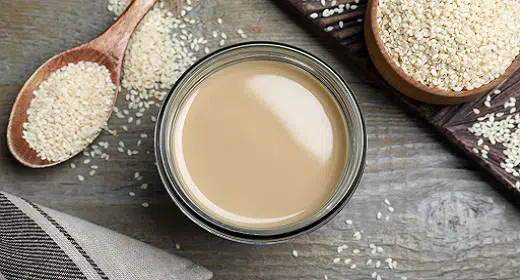by Ocean Robbins: Comedian Mitch Hedberg wondered about sesame seeds a lot. Primarily, he was concerned about how they stick to hamburger buns…
We are proud to announce a new partnership with John and Ocean Robbins and the Food Revolution to bring our readers Summits, Seminars and Masterclasses on health, nutrition and Earth-Conscious living.
Sign Up Today For the Healthy Heart Masterclass
Do they have adhesive backing on just one side? And who has the time to peel and stick all those tiny seeds to the buns?
Hedberg’s musings about sesame seeds were limited to their relationship to buns because he’d probably never seen them in any other context. Had he grown up in the Middle East or East Asia, though, his sesame set would have featured jokes about foods like tahini, halvah, sushi, and sukiyaki. In recent decades, the tiny and tasty seeds have grown in global popularity and versatility as their cuisines of origin have jumped borders and gone international.
While an individual sesame seed may be small, don’t underestimate the nutritional value of a bunch of them. And if you haven’t experienced the wonders of sesame beyond a bun or an everything bagel, you may enjoy getting to know the much bigger and more delicious world of sesame seeds and sesame products.
In this article, we’ll say “open sesame” to the mystery of the “Queen of Oilseeds.” We’ll explore their health benefits, find out about potential downsides, and brainstorm delicious and creative ways to include sesame seeds and sesame products in your diet.
Ready? With all due respect to Big Bird and Grover (insert Sesame Street theme song music here), let me tell you how to get, how to get to sesame seed.
What Is Sesame?
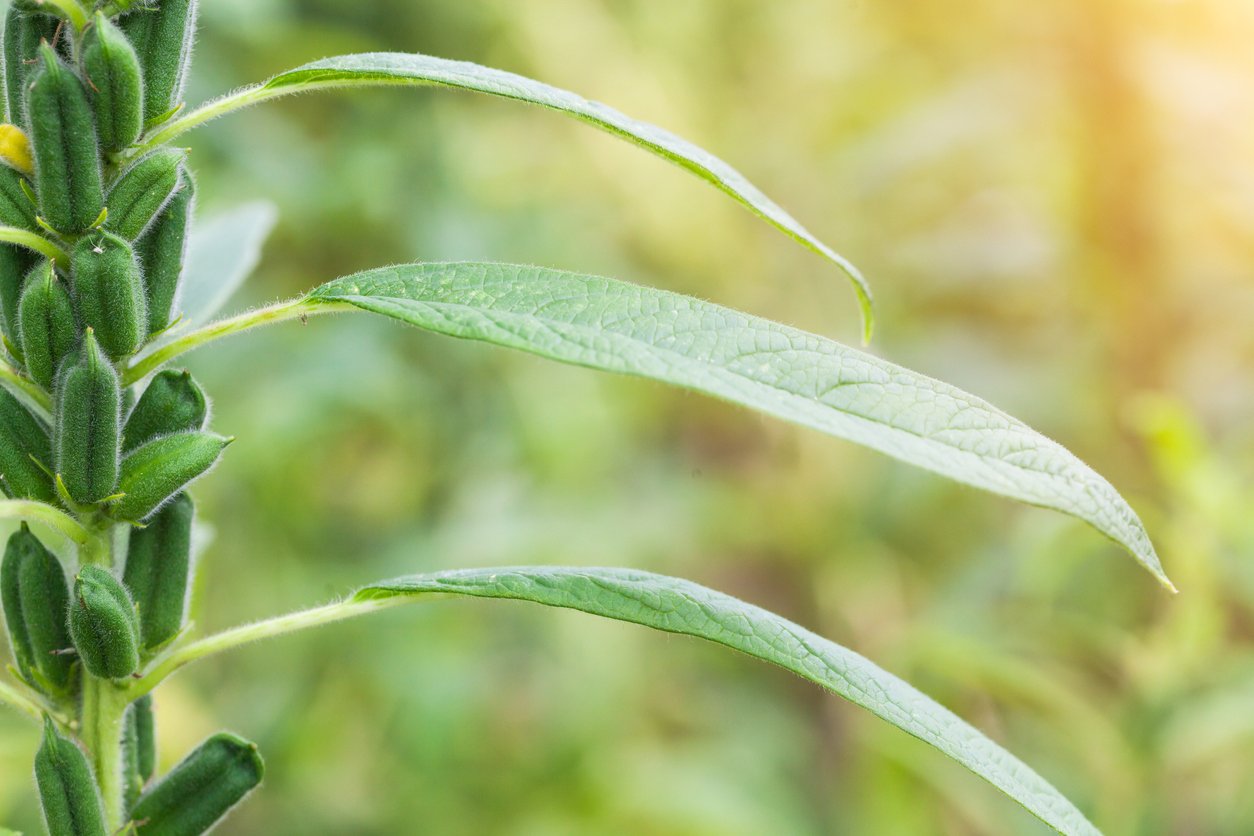
Archeological evidence suggests that sesame is one of the oldest cultivated crops in the world. The oldest sesame seeds found in an archeological context come from the Indus Valley site at Harappa, now in Pakistan, which dates back 4,000–4,600 years. (I can only imagine how hard it would be to find a seed that old in a giant mound of earth. Hopefully one of the diggers didn’t just drop one from between their teeth after lunch.)
Sesame seeds come from the Sesame or Sesamum indicum L. plant, an oilseed crop of the family Pedaliaceae, which to my surprise did not include unicycle ferns or penny-farthing thistles. A prolific producer, one sesame seedpod can produce hundreds of seeds. Botanists think the plant originated in what is now India or Africa; and considering that it still grows wild in Africa, that’s probably a solid guess.
Sesame was likely domesticated somewhere on the Indian subcontinent and probably spread from there to Mesopotamia around 2000 BCE (that’s a lot of sesame spread!) The Babylonians used the seeds to make the only kind of oil they cooked with, and news of the innovation got to Egypt around 500 years later. By 200 BCE, the Chinese had been growing sesame long enough to make it a common staple crop.
To this day, in some cultures, sesame is regarded as the “Queen of Oilseeds” due to its ability to stay fresh and tasty for a long time, resisting oxidation and rancidity.
Hulled vs Unhulled Sesame Seeds
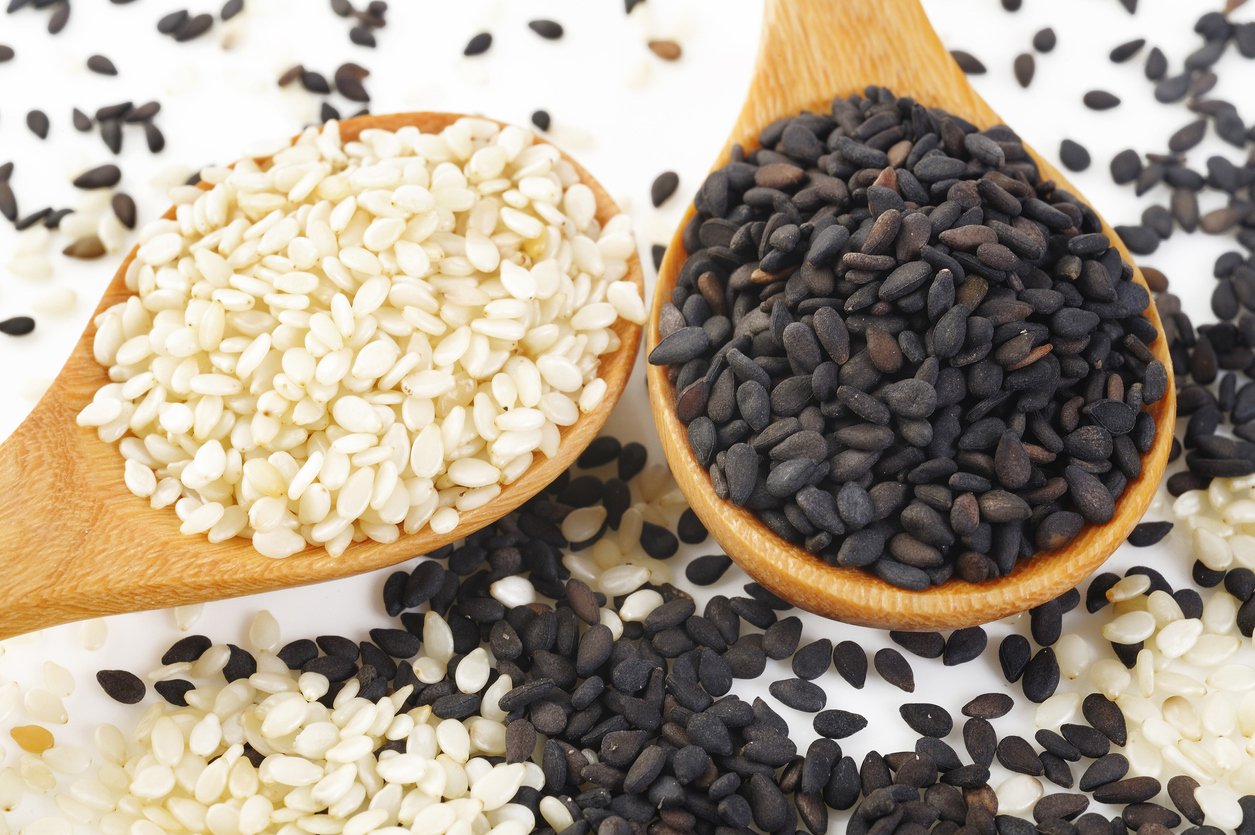
When you buy sesame seeds, you can get them either hulled or unhulled. The hulls are the shells, or outer coverings, of the seed. Hulled sesame seeds have had this covering removed, and unhulled sesame seeds have an intact outer shell.
When shopping for sesame seeds, you might see them characterized as black, brown, or white. Black and brown sesame seeds are the unhulled version (the outer coating is actually kind of golden brown) of seeds, while white sesame seeds are the hulled ones.
Black and brown sesame seeds boast a nutty taste and slightly sweet flavor and aroma that you can enhance by toasting. White seeds — the ones you’ll typically find in a Western grocery store — have a milder flavor.
Black sesame seeds show up often in Asian cuisine. These have a stronger, earthier, and sometimes bitter flavor, along with a crunchier texture.
Other Sesame Seed Products
Cultures around the world have turned raw or roasted sesame seeds into flavorful and versatile ingredients, as well as cherished items of various cuisines.
Tahini
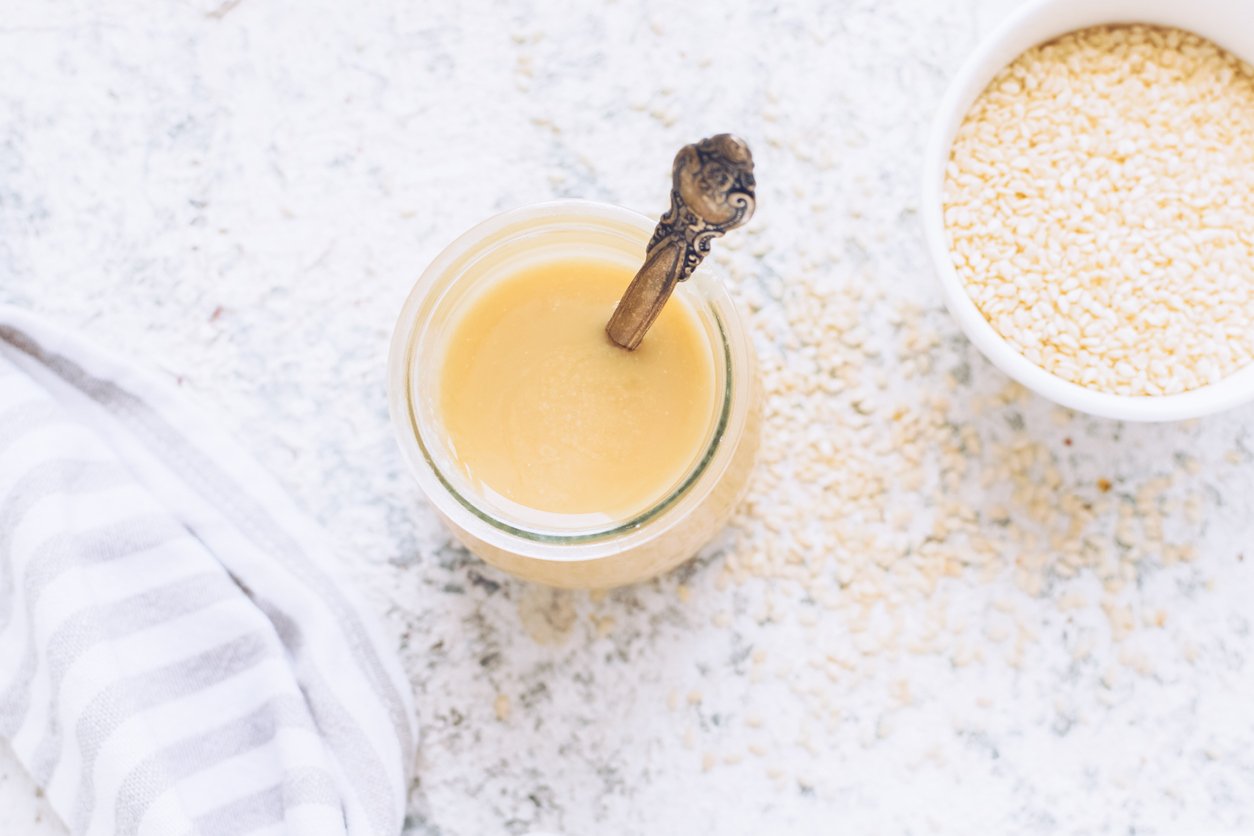
The Middle East gave us tahini, a condiment or sauce used in Middle Eastern cooking. Tahini is made from ground sesame seeds, either raw or roasted. Tahini is also considered a type of seed butter and is vegan.
There are many uses for tahini, but if you’re a traditionalist, you can drizzle tahini over falafel. You can also include it as a whole-foods fat source in dressings, sauces, and dips. Classic hummus consists of two main ingredients — chickpeas and tahini — along with flavorings like garlic and an acid like lemon juice.
You can buy a bottle of tahini at your leisure, as it’s shelf-stable until opened, for at least a year or two. Once opened, keep your tahini refrigerated so the oil doesn’t separate, and use it within 3–6 months (our recipes below will ensure that it doesn’t last that long). If you’re not sure if your tahini is still viable, check for a rancid odor, or mold forming on the inside of the jar or lid. Homemade tahini may go bad faster; you can slow this down by storing it in an airtight container. And make it in small batches so you can use it up before it turns towards sesame seed heaven, or wherever it is that sesame seeds go when their edible life is drawing to a close.
Sesame Paste
An Asian take on tahini (or is tahini a Middle Eastern take on sesame paste?), sesame paste comes from toasted, unhulled sesame seeds. Sesame paste uses abound in Chinese and other Asian cuisines — use it in soups, as well as noodle and rice dishes.
Sesame paste is typically darker in color than tahini and has roughly the same consistency. But you can also store it like tahini: you can keep sesame paste in its original airtight jar for up to two years, and once opened, refrigerate it and use it within six months.
Sesame Oil
Sesame oil is a staple cooking oil and condiment ingredient in many Asian cuisines. If you use oil, you can use light sesame oil as a neutral cooking oil, and reserve toasted sesame oil as a flavoring for sauces, soups, and other dishes. With sesame oil, the darker the color, the stronger the flavor.
Both types of sesame oil are highly stable and resist oxidation. You can store light sesame oil for up to a year at room temperature. Toasted sesame oil has a slightly shorter shelf life, but will still last for many months if you keep it refrigerated.
If you choose to use sesame oil, do so in moderation, as it’s very high in omega-6 fatty acids. While both omega-6s and omega-3s are essential nutrients, most people consume way more omega-6s than omega-3s, and it’s important to even out the ratio.
Halvah
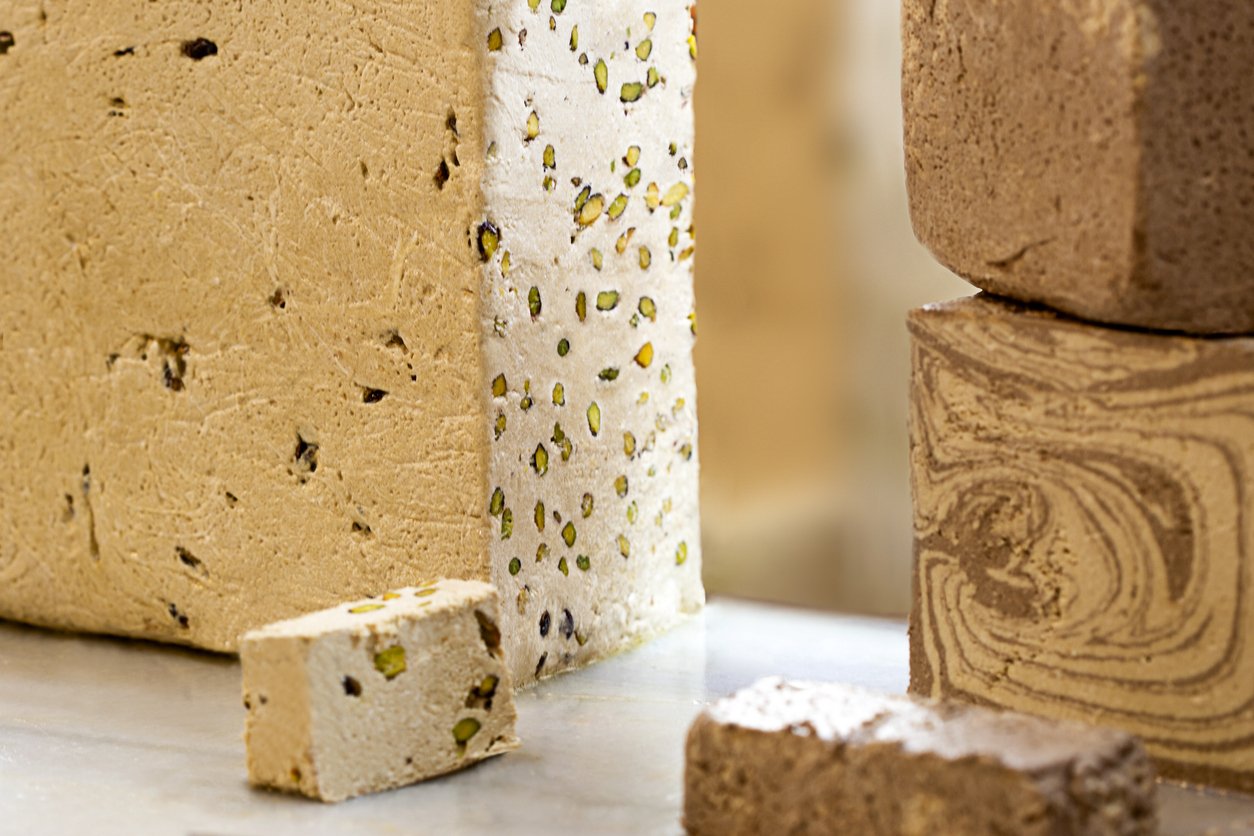
Halvah is a Middle Eastern dessert that traditionally consists of ground sesame seeds, sugar, and other sweeteners and flavorings, such as honey, pistachios, and chocolate. The texture is solid, almost like a block of fudge, but when you break or bite into it, you’ll find it somewhat crumbly and chalky.
You don’t have to refrigerate halvah, but many people do because the cold keeps it firmer. Unrefrigerated, it will last up to six months, but realistically, if you like it you’ll find it hard not to gobble it up well before then.
Note that some halvah brands use refined sweeteners and natural flavorings, so make sure to read the ingredients before purchasing.
Sesame Flour
Sesame flour is a gluten-free baking flour made from raw, unhulled, and ground sesame seeds. You can use it just like almond flour in gluten-free crackers, breads, batters, and various baked goods.
Some varieties are labeled “defatted,” which just means the seeds are cold-pressed to remove the oil before they’re ground. Sesame flour, defatted or whole, lasts about 6–12 months at room temperature.
Sesame Seed Nutrition
All sesame seeds are good sources of protein, healthy carbohydrates, fiber, fatty acids, B vitamins, and minerals like copper, calcium, iron, magnesium, and manganese. Unhulled seeds contain more calcium, iron, potassium, and other minerals, while hulled seeds are slightly higher in folate and have a higher fat concentration and higher levels of fat-soluble vitamins, such as vitamins A and E.
All types of sesame seeds are high in phytochemicals, including the lignans sesamin and sesamolin (“S is for sesamolin, that’s good enough for me”) that act like antioxidants, scavenging free radicals and reducing inflammation. If you really want to get your antioxidants on, go for the black sesame seeds, which are often studied for their potent health benefits thanks to their stronger antioxidant activity.
Sesame Nutrition Facts
You can see a comparison of the different kinds of sesame products’ nutrition below:
- 1 tablespoon of sesame seeds, whole, dried: 51.6 calories, 1.59g protein, 4.5g fat, 2.1g total carbohydrates, 1.06 fiber (Source: USDA)
- 2 tablespoons of tahini: 190 calories, 5g protein, 16g fat, 6g carbohydrates, 3g fiber (Source: USDA)
- 1 ounce of halvah: 159 calories, 6g protein, 8g fat, 13g carbohydrates, 2g fiber (Source: USDA)
- 1 tablespoon of sesame oil: 120 calories, 0g protein, 13.6g fat, 0g carbohydrates, 0g fiber (Source: USDA)
- 1 ounce of sesame flour: 94 calories, 14.2g protein, .5g fat, 10g carbohydrates, 0g fiber (Source: USDA)
Benefits of Sesame Seeds
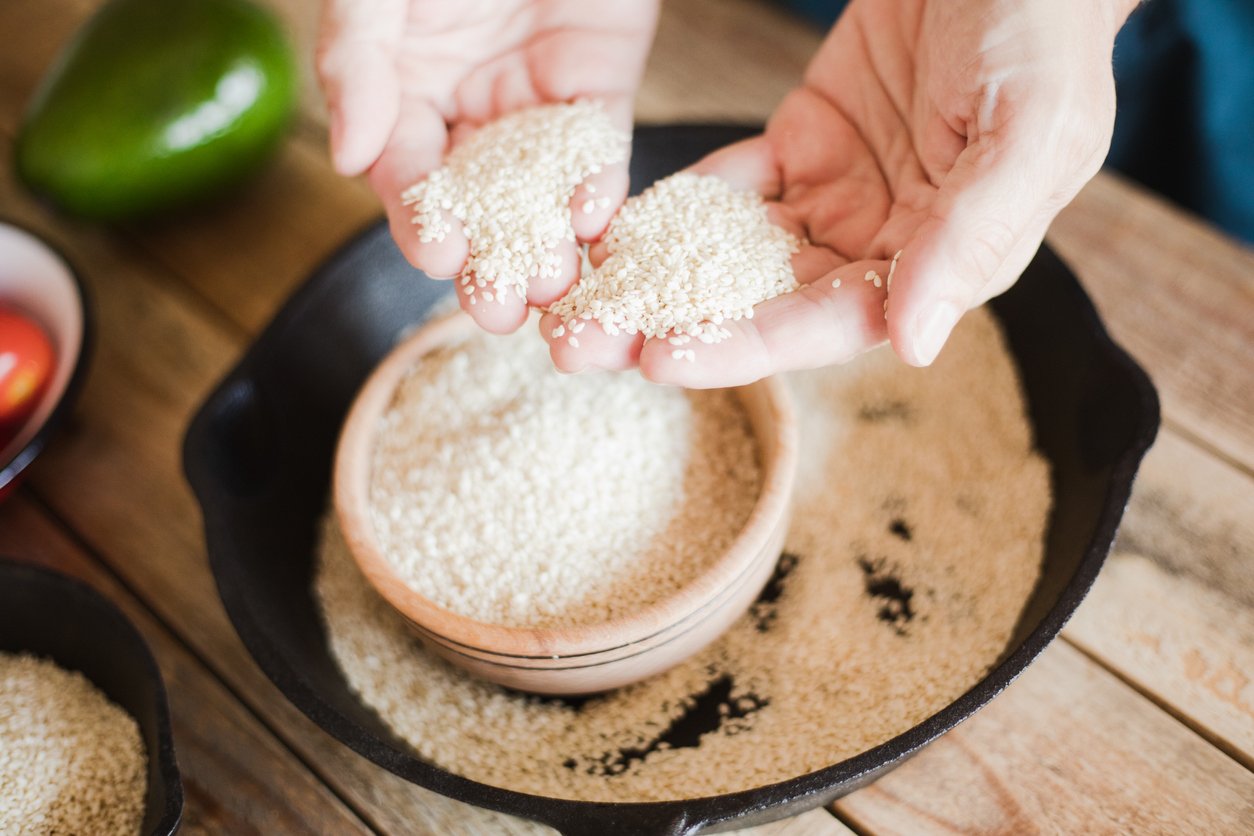
Science is catching up on centuries of folk wisdom regarding the health benefits of sesame seeds.
Anti-Arthritic Benefits
A 2019 study out of Iran found that supplementation with sesamin reduced inflammatory biomarkers in women with rheumatoid arthritis. Those in the sesamin group also reported less pain than those given a placebo.
Anti-inflammatory Benefits
A 2021 meta-analysis of seven studies on the anti-inflammatory effects of sesame consumption showed that eating sesame seeds reduced some inflammatory biomarkers. It’s not clear whether these effects will be more pronounced and widespread through the consumption of seeds, oil, or supplements; like almost every nutrition study ever written, the paper ends with a call for further research.
Sesame seeds also seem to be protective of the heart. The lignan sesamin apparently does a lot of the heavy lifting here. As one study put it, there’s evidence that the compound is “anti-hypertensive, anti-atherogenic, anti-thrombotic, anti-diabetic, and anti-obesity,” which I’d pay good money to hear Big Bird and Elmo sing as a duet, with Zoe translating for the rest of us: “against high blood pressure, against injuries to blood vessel walls, against dangerous blood clots, against diabetes, and against gaining too much weight.”
Lowering LDL Cholesterol
A small 2014 study of men suffering from osteoarthritis of the knee found that 40 grams per day of sesame seeds lowered their total cholesterol, and more significantly, their LDL (“bad”) cholesterol. Sesame oil also passed that test, decreasing LDL levels while maintaining the “good” HDL cholesterol levels in humans and laboratory rats, mice, and rabbits. (Our view on the use of animals in medical research is here.)
Anticancer Benefits
Sesame seeds may also fight cancer, thanks partly to the potent antioxidant lignans sesamin and sesamol. And sesamol’s big brother sesamolin has been shown to induce apoptosis (a process whereby damaged cells essentially self-destruct for the good of the organism; something that stops working in cancerous cells) in leukemia, lymphoma, and colon cancer cells.
Good for Athletic Performance
Sesame seeds can improve athletic performance, according to a 2017 study conducted with 20 teenage Brazilian football players (you may know the game as soccer). Half the players consumed two tablespoons of sesame seeds a day during 28 days of hard training, and the other half received a placebo.
How do you create a placebo that will fool people into thinking they’re eating sesame seeds when they’re not? I’m glad you asked — I had the same question. The trick, according to the study, was to grind the actual sesame seeds into a paste and sweeten them with honey. The placebo then consisted of honey, maltodextrin, cow’s milk, and artificial caramel food coloring. There — now you can open a restaurant called Placebo Sesame Cafe.
The young athletes who consumed the actual sesame seeds experienced less muscle damage, less oxidative stress, less systemic inflammation, and improved aerobic performance.
Brain Benefits
Sesame seeds may be good for your brain and nervous system. Black sesame seeds appear to contain a compound that interferes with amyloid plaque formation in the brain, the very process associated with the ravages of Alzheimer’s. In 2020, a team of Japanese researchers showed that sesaminol prevented cellular changes associated with Parkinson’s disease in test tube studies.
Another team out of Japan found that 12 weeks of supplementation with sesamin and another compound, astaxanthin, improved cognitive function in people aged 50–79 who exhibited symptoms of mild cognitive impairment. Specifically, those taking the active supplements gained in psychomotor and processing speeds compared to placebo controls.
Antidiabetic Benefits
To round out the research on sesame, it also appears to help prevent and manage diabetes due to its hypoglycemic effects. A 2021 meta-analysis of the eight randomized controlled trials of sesame compounds on blood glucose found that they significantly decreased fasting blood sugar. And a 2019 clinical trial out of Pakistan used white sesame oil not only to lower fasting blood sugar and A1C levels in type 2 diabetics but to improve their liver and kidney functions as well.
Sesame Risks
With sesame seeds, it’s not always a sunny day where the air is sweet.
Sesame Allergy
Sesame has become a major allergen over the past two decades, likely due to the increased use of sesame seed and oil-containing products in Europe and North America.
Sesame’s status as the ninth major food allergen was codified by the US government’s Food Allergy Safety, Treatment, Education, and Research (FASTER) Act on April 23, 2021. (I hope the position of US Acronymer Laureate pays well, it’s an important job — “Food Allergy Research and Treatment — no, that won’t work…”) The required labeling of products that contain sesame or have been manufactured or packaged anywhere near sesame goes into effect on January 1, 2023.
In Israel, a country that takes its sesame seriously, only cow’s milk was found to be a more common cause of anaphylaxis (that’s an extreme allergic reaction that involves all sorts of unpleasant and potentially life-threatening symptoms, including facial swelling, heart palpitations, and inability to breath). Sesame’s place near the top of this list is probably due to near-universal early exposure and heavy consumption of sesame-containing foods in Israel.
Not every allergic reaction to sesame is so severe; sometimes all a sufferer might experience is a mild case of hives. But if you have a sesame allergy, it is recommended to keep an epinephrine injection device like an Epi-pen with you at all times, as epinephrine is the first-line treatment for anaphylaxis regardless of the trigger. And of course, avoid eating sesame seeds in any form.
Oxalates
Oxalates are compounds in certain foods that, consumed in very high amounts, could predispose you to calcium-oxalate kidney stones, which are what you should see pictured when you look up “No fun” in the dictionary. And sesame seeds contain a heck of a lot of oxalates: according to food science, almost 2,800 milligrams of oxalic acid per 100 grams of sesame seeds.
Arguably, this level of oxalate exposure becomes a problem if you’re consuming sesame seeds by the bucketful. But 100 grams is actually a lot of sesame seeds — around half a cup — and as most servings of sesame seeds tend to be a single tablespoon (15 grams) or less, using the seeds as a topping or condiment doesn’t really raise oxalate alarms.
And other sesame products contain much lower amounts of oxalate due to heating and processing, which destroys them. The good news is that because sesame seeds are also high in potassium, calcium, and phytochemicals, all of which moderate the effects of oxalates, they’re generally not a problem for most people.
See our article here for more on oxalates.
Phytoestrogens
Sesame seeds contain lignans, which are types of phytoestrogens. Estrogen is a hormone found in animal-derived foods, and phytoestrogens are plant compounds that look and act enough like true estrogen to be able to bind to estrogen receptors in your body.
The similarities have caused some food writers and bloggers to worry about the effects of these lignans and other phytoestrogens on our sex hormones.
The best-known phytoestrogen controversy is over soy and the development of “man boobs” — which turns out to have no real basis in fact. (For more on the truth about soy, see this article.)
There doesn’t appear to be an evidentiary basis for phytoestrogen concerns in sesame seeds, either. Studies show that while phytoestrogens do bind to estrogen receptors in the body, their estrogenic activity is much weaker than true estrogen, and they may actually block or even oppose the effects of estrogen in some tissues. Think of a piece of gum fitting into a keyhole; as you cram it in, it takes on something of the shape of the key, but it doesn’t open the door. And it makes it harder for a real key to open the door, too.
In addition to their potentially beneficial antiestrogenic effects on some tissues, phytoestrogens offer a number of health benefits, including lowering blood pressure, reducing the frequency of hot flashes in menopausal women, and reducing the risk of hormone associated cancers.
Acrylamide
Roasted sesame seeds and related products may contain acrylamide, a potential carcinogen that is formed in certain foods during cooking or processing at high temperatures.
Acrylamide formation may be a result of the Maillard reaction, which is browning from cooking or processing due to a chemical reaction between an amino acid and a reducing sugar, and not the nasty look you get when you surprise a duck.
Roasted or toasted sesame products — which can include seeds, tahini, sesame paste, halvah, and sesame oil — have been found to contain varying amounts of acrylamide. A few are high enough that the state of California puts a Prop 65 warning on them, signifying that prolonged exposure may increase the risk of cancer.
The testing of sesame products in Turkey, however, found that traditional sesame foods like halvah and tahini have low levels of acrylamide, and that you’re more likely to be exposed to high levels from foods like french fries and baked goods.
You can take steps to limit your exposure to acrylamide. If you stir-fry with sesame oil, heat the pan at most to 170°C (338°F), and don’t use toasted sesame oil for frying. Even better, replace the oil in your stir-fries with water or broth. And add a small amount of cold sesame oil after the dish has been prepared if you want that rich and nutty sesame flavor with minimal acrylamide exposure.
The best way to avoid acrylamides from sesame seeds is to eat them raw, and use sesame products like raw tahini — either store-bought or homemade.
How to Store & Use Sesame Seeds
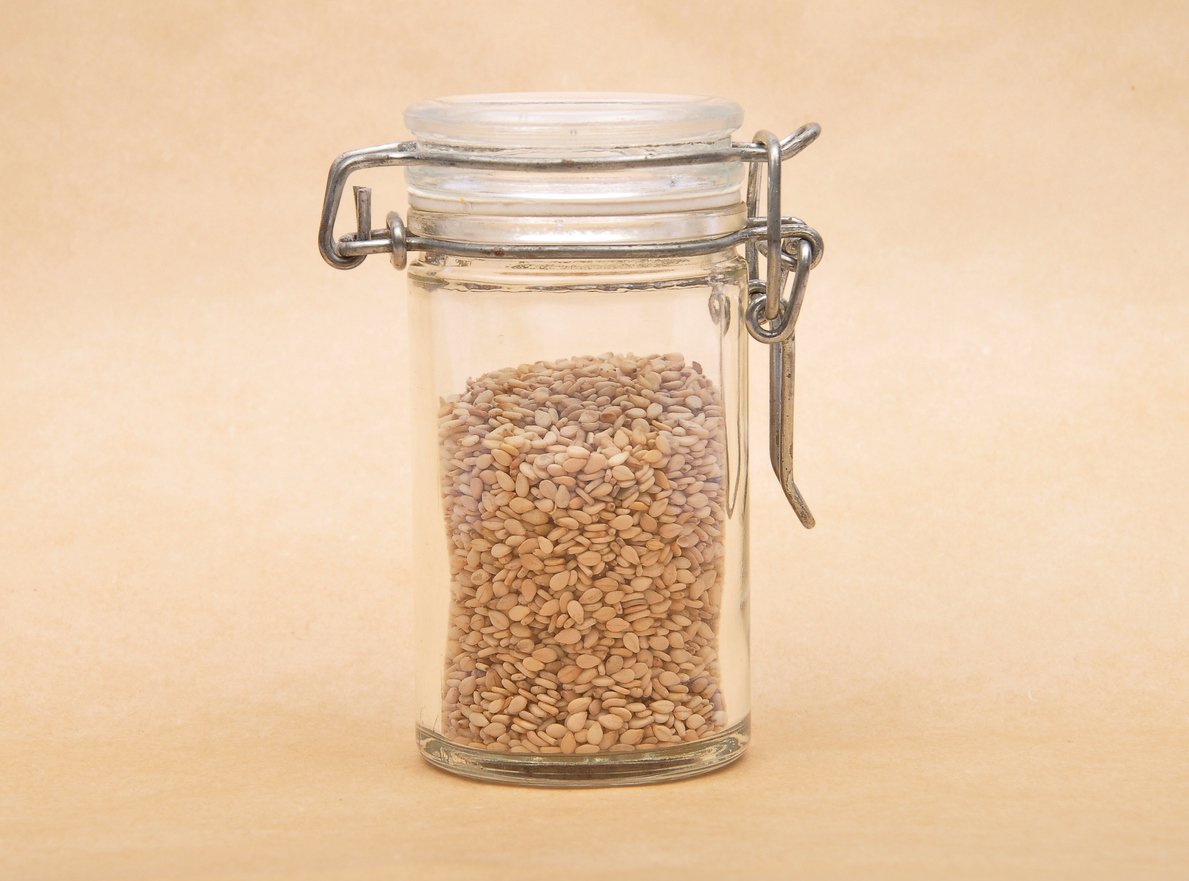
Even though they resist rancidity better than most other seeds and nuts, sesame seeds aren’t fully immune to spoilage. Because of their high oil content, hulled sesame seeds are kept best refrigerated or frozen in an airtight container after opening. You can keep them for up to three months without refrigeration, up to six months in the fridge, and up to a year in the freezer.
Sesame seeds enhance both savory and sweet dishes. You can sprinkle them on just about anything — oatmeal, power bowls, stir-fries, noodle dishes, salads, appetizers, side dishes, and soups.
Would you like to get your mouth watering with all the great ways you can add sesame seeds to your menu? If so, let’s not waste any time — here are some sesame and tahini recipes that will nourish your body and delight your palate.
Sesame Recipes
Tahini is an essential ingredient in any plant-based kitchen because of its versatility — it can add creamy texture, nutty flavor, and essential nutrients to just about any dish. Sesame Sunflower Chia Bites incorporate nutrient-packed seeds with tahini, making them a good source of protein, fiber, and healthy fats to keep you energized and satisfied. Sesame seeds not only give the Asian Black Rice Salad a finishing touch of color, but add calcium and phytonutrients to boot, plus some fun crunch! Finally, the Turmeric Tahini Sauce gets its scrumptious flavor and creamy texture from dreamy tahini.
1. Sesame Sunflower Chia Bites
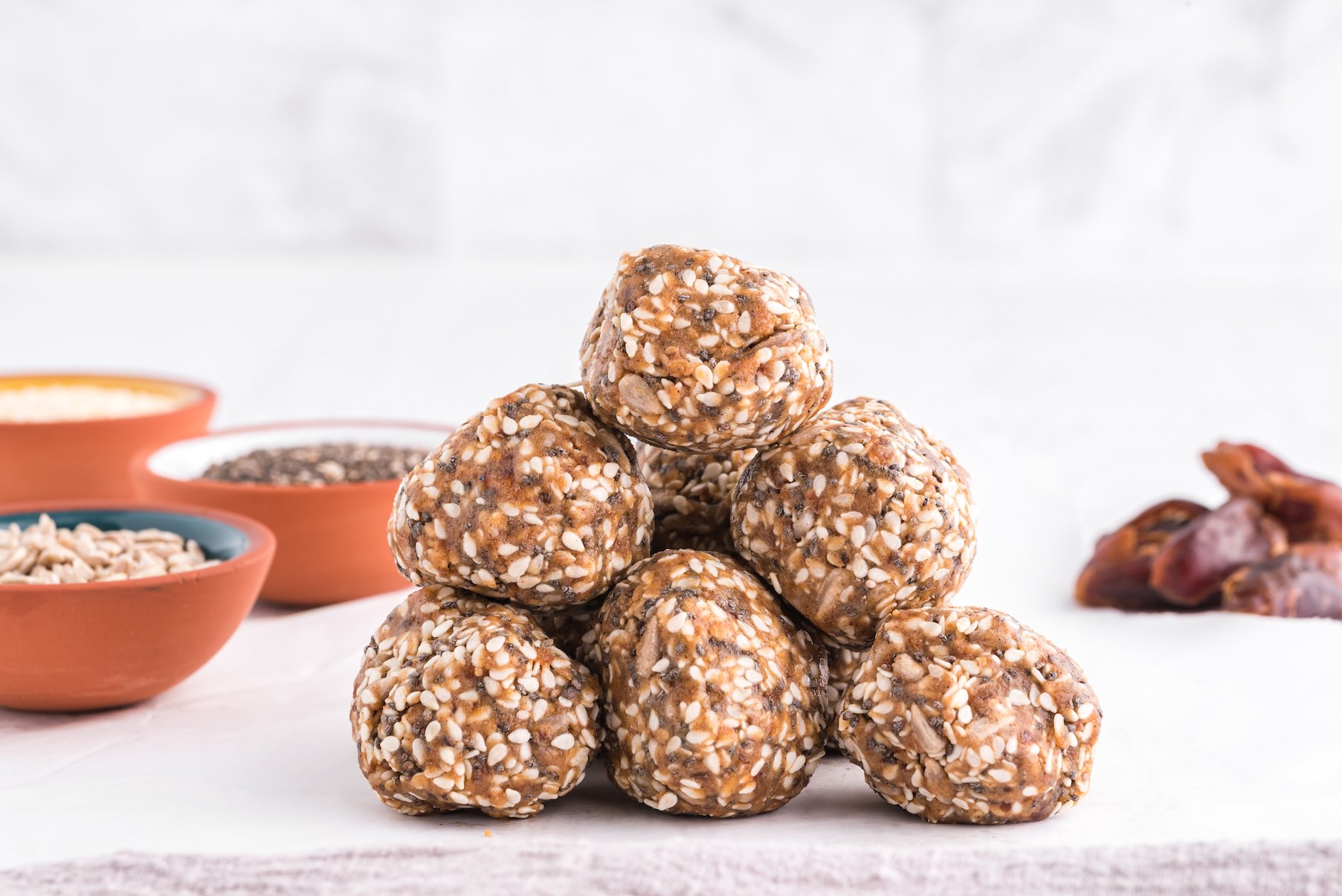
Sesame Sunflower Chia Bites boast nutrient-packed seeds, including pumpkin and sesame, making them a good source of protein, fiber, and healthy fats to keep you energized and satisfied. What’s more, sesame seeds are jam-packed with calcium, magnesium, and phosphorus. The bites are sweetened with whole pitted dates that complement the nutty flavor of sesame and sunflower seeds perfectly.
2. Asian Black Rice Salad
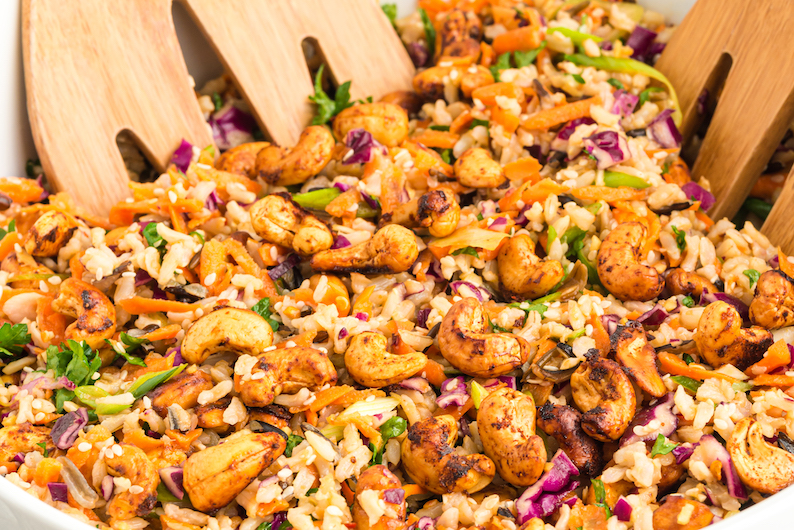
Get ready to wow your guests at that summer picnic with the Asian Black Rice Salad. It’s bursting with color, flavor, and fun textures from the carrots, cabbage, and cashews. The addition of sesame seeds not only gives the Asian Black Rice Salad a finishing touch of color, but also adds calcium and phytonutrients, plus more fun crunch!
3. Turmeric Tahini Sauce
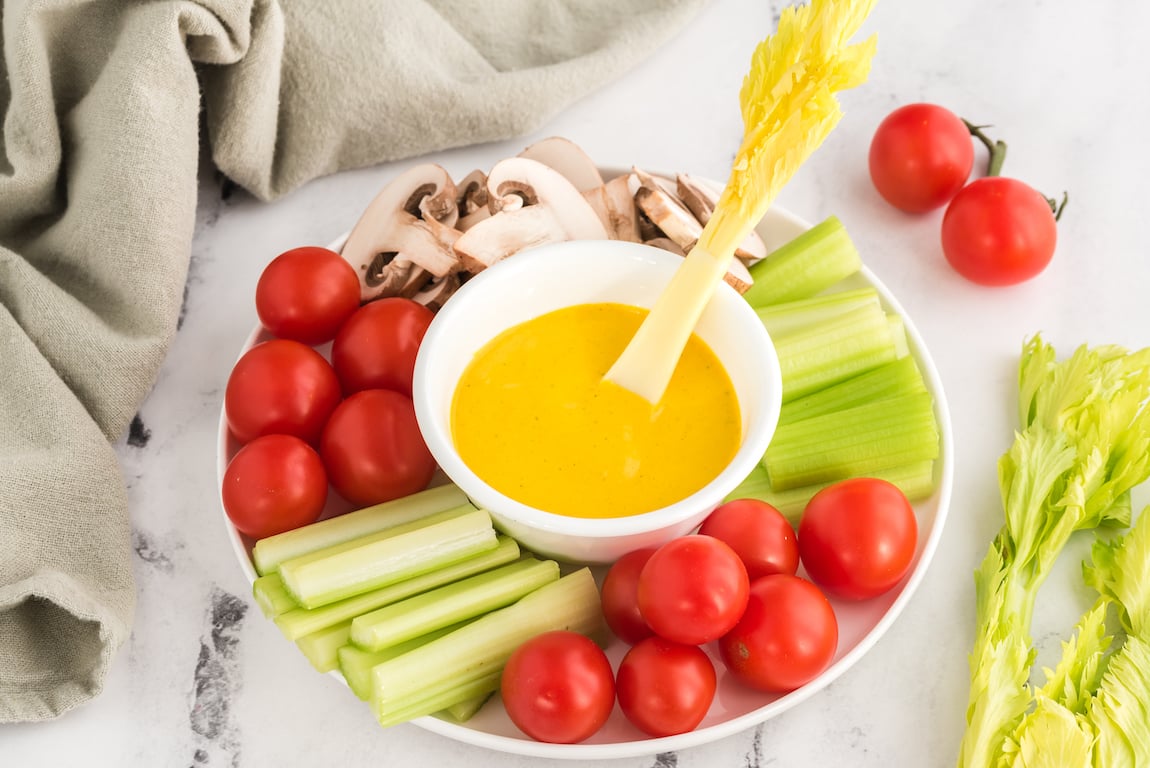
Turmeric Tahini Sauce is slightly nutty, very creamy, and packed with nutrition thanks to the tahini. The turmeric adds just a bit of earthiness along with anti-inflammatory compounds, and lemon adds some zest as well as vitamin C. This tahini recipe just might become your new favorite addition to drizzle on top of salads, grain bowls, and steamed veggies!
Sesame and Tahini Are Good for You!
Sesame seeds are a versatile food that offers considerable health benefits. While there are a few considerations when eating sesame seeds or sesame products, they’re safe and ultimately beneficial for most people. You can enjoy many types of sesame products as part of a wide variety of dishes and cuisines, in whole, paste, oil, or flour form. Sesame seeds can be a delicious and nutritious addition to a well-balanced diet.







